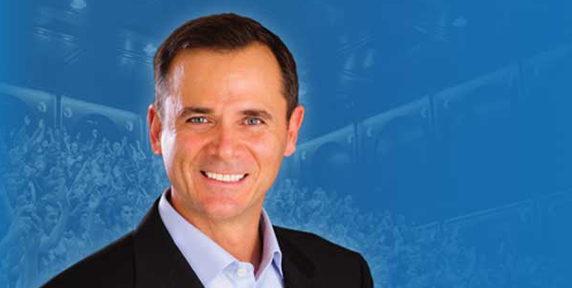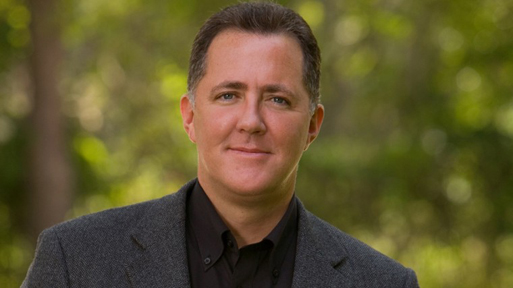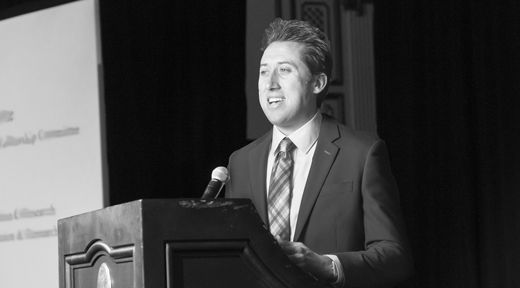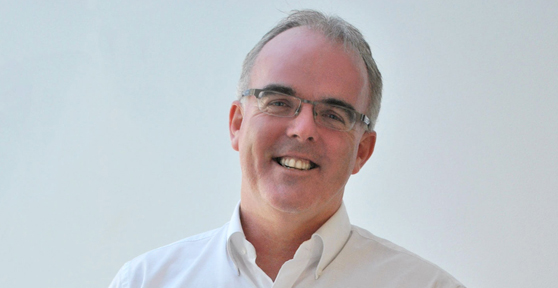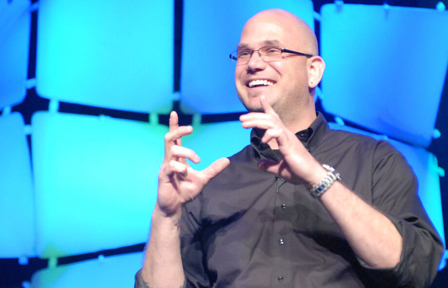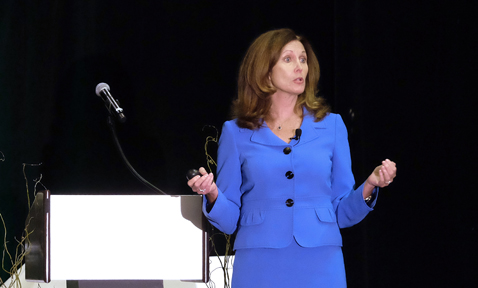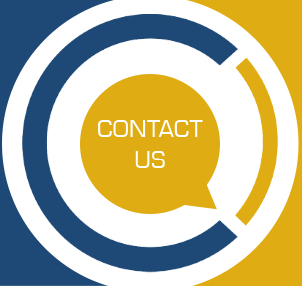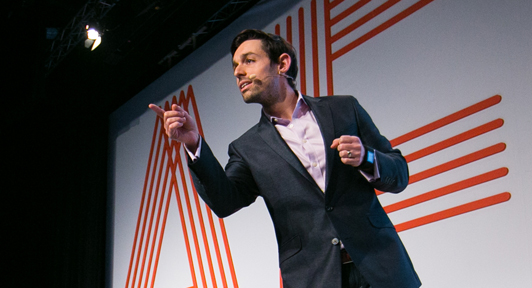
The Future of Work, with Jacob Morgan
| The way we think about and approach work has fundamentally changed. We are more comfortable living a more public life where we share, communicate, and collaborate in front of the whole world to see. | |
| |
 | What are the 5 Trends shaping the future of work? |
 | The five trends that are impacting everything we know about how the workplace is changing are:
• Globalization: doing business in a world where boundaries of any kind are crumbling. The language you speak, the currency you transact in, the culture you subscribe to, and where you are located are mattering less and less. |
 | What is “the employee experience” and why is it becoming more important? |
 | I define employee experience as the organization’s attempt at creating a place where people want to show up to work as opposed to needing to show up to work. Employers focus on three environments: the cultural, technological, and physical.
This is the topic of my new book for Wiley called, The Employee Experience Advantage. For this book I interviewed 150 senior executives, combed through over 150 research articles, and analyzed over 250 global organizations to determine how effective organizations are at creating employee experiences. Shockingly, only 6% of all of the organizations I analyzed would be considered Experiential Organizations, meaning they are amazing at creating employee experiences. There are 8 other categories of organizations I developed as well. This is a crucial area of investment for organizations around the world as they realize they need to do more in order to attract and retain the very best talent. Why would someone want to come work for you instead of your competitor or your neighbor? Employee Experience is what allows us to create organizations where people want - not need - to show up to work. |
| Create employee experiences with your people, not for your people. Employees need to have a say, which means asking for constant feedback and encouraging employees to speak up and share. | |
| |
 | What steps can organizations take to create an outstanding employee experience? |
 | There are a few things that organizations can do.
First, organizations have to understand that employee experience is not the same thing as employee engagement. Today employee engagement has become a short-term adrenaline shot vs. the long-term strategic design of the organization. Employee experience is the long-term cause while employee engagement is the effect. Second, create a strong Reason for Being which is essentially a modified Mission Statement that does a great job of connecting the work that the employees do with the impact they have on the organization, the world, and the surrounding communities. Third, understand that the employee experience isn’t a nebulous thing. From my research I have found that all employee experiences are created by a combination of three environments, which are: cultural, technological, and physical. Furthermore, I identified 17 variables that span these three environments. Fourth, create employee experiences with your people, not for your people. Employees need to have a say, which means asking for constant feedback and encouraging employees to speak up and share. These are good starting points, at least until my new book comes out. |
 | Is it possible for organizations to give employees too much freedom? |
 | This usually comes into play when organizations talk about self-management versus autonomy. Self-management is where employees decide the direction of the organization and then decide the steps they want to take to get there. Autonomy is where the organization decides the strategic direction and the employees help figure out how to get there.
I don’t believe self-management is the future of work, at least not anywhere in the near future and not for larger organizations. Can you imagine going into a large organization and just giving everyone complete freedom to work on anything and everything they want? It would be complete chaos! Instead it’s helpful to provide guidance to employees to help them understand the destination while empowering them to figure out the route to take to get there. That’s more scalable, practical, and realistic. |
 | During the hiring process, what are some ways hiring managers/recruiters can spot candidates who perform well without supervision? |
 | People who have a background in “doing their own thing” are typically good at being self-driven and determined. The same is true for people who have previously worked in flexible environments. |
 | How is the role of management changing?
Managers and management was created for one thing and one thing only: to enforce rules, policies, and protocols. Today managers are becoming more like coaches and mentors instead of enforcers of rules. In fact one of the best ways to spot a good manager is to look at whether or not they help make people more successful than they were before! That’s a great manager. |
 | What is the future of the 40-hour workweek as a standard for full time employment? |
 | Although there are a few experiments going on around the world to test variations on the traditional workweek, it’s hard to see the 40-hours disappearing, at least in the near future. We have a climate of business, political, and geopolitical uncertainty where people are trying to work hard and save as much as they can. Amazon recently made the news where they were testing a new shorter workweek. However, what people need to realize is that a shorter workweek means less money; it’s proportional.
Now, if we can reduce the workweek while keeping pay and benefits the same, then that’s something that would make more sense. Many believe that with the introduction of more AI and robots that this could potentially happen, but it won’t be in the next few years. We also need to remember that even if the workweek drops to let’s say 32 or 24 hours a week, that we as individuals can still opt to work on the side by driving for Uber or freelancing on sites like Upwork. This can potentially increase income inequality, as those who decide to work beyond the standard workweek will naturally make more. |
| If you can make freelancing work it’s the most rewarding thing you can do...but make no mistake, it is hard work! | |
| |
 | What is the future of freelancing? |
 | Freelancing is a small part of what is being known as Alternate Work Arrangements. When most people think of freelancing today they think of what the JP Morgan Chase Institute refers to: online platforms that make up either capital or labor platforms. Capital platforms are places where you sell or rent things like Etsy or Airbnb. Labor platforms are sites like Uber or Task Rabbit where a task is performed. If you look at the media today you will see all sorts of outrageous numbers stating that 20% of the workforce is a part of these platforms, but this is nonsense. Every serious academic study realized shows that there are around 0.5%-1% of the workforce using these online intermediaries. It’s growing quickly but it’s nowhere near what most people think.
I definitely see a strong and bright future for freelancers but we have to remember that it’s not as though anyone can say “I want to freelance” and then magically have projects lined up. Being a freelancer is similar to being an entrepreneur or a small business owner. By saying you want to become a freelancer you’re essentially saying, “I’m going to start my own successful business.” The good news is that it’s never been easier to do this, but there are still plenty of challenges and uncertainties that freelancers have to deal with such as getting clients, dealing with legal issues and taxes, marketing and branding, website design and creative, learning how to work with and hire other freelancers to help you, managing income instability, and the like. If you can make freelancing work it’s the most rewarding thing you can do (speaking as someone who has technically been freelancing for the past 8 years), but make no mistake, it is hard work! |
 | What are some strategies people can use to build a successful career as a freelancer? |
 | I can only share what I did. I had a full time job and then on the side I started doing side gigs. I saved up to the point where if I had gotten fired and didn’t make another penny, I’d have at least enough money to cover a year of expenses. Keep in mind, this was living in San Francisco around 2008-2009 so at the time that figure was the equivalent to $16,000. I waited until my side projects brought in enough revenue to cover my main expense, rent, and then I quit my job.
The best advice I can give anyone who wants to become a freelancer is be smart about it. Make sure you have some savings and a back-up plan. Mine was moving back to LA and living with parents (which I definitely didn’t want to do). Heck, I was even willing to go work at a Starbucks if I had to! People who want to freelance also have to learn about the business side of things, i.e. starting a business, paying taxes, and the like. As far as building your personal brand there are 3 things that worked for me: 1. Consistency – make sure your message and your branding is consistent, in other words don’t start talking or writing about leadership one month and then all of a sudden start talking about customer service the following month. Pick an area and own it. 2. Frequency – Create content as often as you can that will help position you as a thought leader. 3. Visibility – Share your content in the most visible ways and platforms possible. |
 | Could you tell us the story of how you became a thought leader on the future of work and employee experience? |
 | It all started with terrible jobs I had working for other people. I was never a good student in high school or even community college; however, when I started my final two years of college at UCSC I was determined to get good grades. I graduated with honors and a dual B.A. in business management economics and psychology. I was very excited to join the corporate world and make a difference. My first job out of college was for a company in LA. When I interviewed there I was told I’d be traveling and meeting with business leaders, working on cool projects, and helping out with strategy. This is exactly what I wanted, so much so that I was willing to forego the 1.5 hour commute to and from work every day. That’s 3 hours a day total, 15 hours a week, making it a part time job just driving to a job. But no matter, I was excited to work there.
A few months into my job I was doing data entry, cold calling, and power point presentations. One day, an executive came out of his nice corner office overlooking downtown LA and said, “Jacob I have an important job for you.” Naturally I was excited! He reached into his wallet and handed me a $10 bill and said, “I’m late for a meeting. Can you run over to Starbucks and get me a latte? And get something for yourself as well.” That was one of the last full-time jobs I had working for anyone else. Since then I’ve become fascinated with how the workplace is changing, how we can create places where employees want to show up, what the manager of the future is going to look like, and where the future of work is going to take us. I suppose I should be thankful for that job! To bring Jacob Morgan to your organization, please contact Michael Frick at: Mike@Speaking.com |

